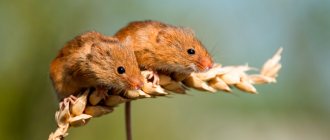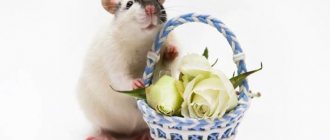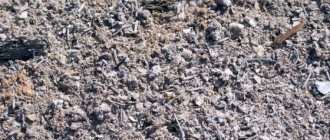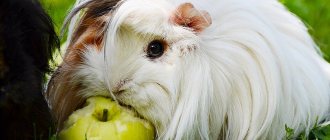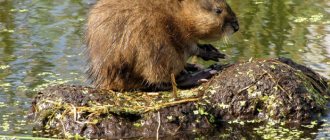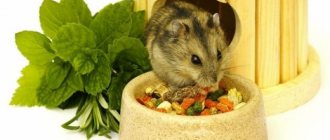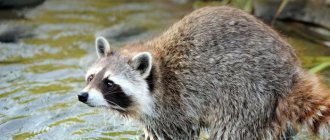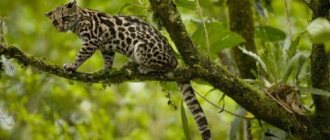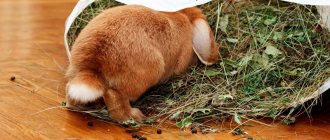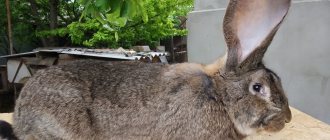Mice are rodents that do not suffer from lack of appetite and can cause enormous damage to food supplies. These animals are considered omnivores, but they have a keen sense of smell and will not try products that contain chemical additives.
And if you know what mice eat in the wild, many mistakes when forming the diet of a domestic decorative rodent can be avoided.
General characteristics of mice
These are the smallest representatives of the rodent genus. They are capable of growing up to 15 – 20 cm in height and weighing about 30 – 60 grams. They come in different colors, but only gray, white or brown. There are up to 50 shades of rodent fur. By the age of 6–8 weeks, the female becomes capable of childbearing. Capable of giving birth to 5 to 10 mice at a time.
For copulation, the female and male should be kept apart until the very moment of copulation. The lifespan of mice is 2 – 3 years. They are primarily herbivores, but are essentially omnivores. A small mouse sometimes eats meat, the corpses of relatives, and is capable of gnawing the tail of its neighbor out of hunger. Unlike guinea pigs, mice do not need fortified food at home.
What can you feed a mouse?
What do Djungarians eat - a list of healthy and harmful foods
In natural conditions, rodents move a lot in search of food, and they are not at risk of obesity. Keeping it at home leads to a sedentary lifestyle for the animal. Feeding should be carried out 2 times a day, the amount of food should be about 20% of the animal’s weight. The exception is the diet of pregnant females, who should be fed 4 times a day.
The mouse consumes a small amount of water; the liquid is formed in the animal’s body during the digestion of food. Despite this, a drinking bowl must be installed in the cage, where the water is replaced with fresh water every 2-3 days.
Cereals are the main food of rodents
What mice like - list of food items:
- Cereals should make up 30-40% of the diet. It is preferable to feed whole grain wheat, oats, millet, and barley.
- The bread is preferably black, in the form of crackers. White bread and buns contribute to the development of obesity.
- Root vegetables - carrots, beets - are offered to the animal every other day, potatoes - no more than 2 times a week.
- Mice love to eat seeds and nuts. However, they should be given once every 2-3 days; these are high-calorie foods.
- Legumes - beans, lentils are allowed to be added to the diet in small quantities 2-3 times a week.
- Fruits - apple, pear once every 3-4 days. In winter, dried fruits in small quantities are useful.
- Hay - contains a large amount of fiber, an essential food in winter to improve digestion. In spring, hay is replaced with sprouted wheat.
- In the summer-autumn period, crushed meadow and forest herbs are introduced into the diet: sweet clover, lupine, nettle, clover, plantain.
- Animal proteins - unsalted lard, chicken fillet, cottage cheese, egg white. Products are given every other day in small quantities.
- Vegetables - broccoli, cauliflower, cucumbers, zucchini - 2 times a week.
- Yeast, bone meal and chalk are periodically added to pet food as mineral supplements.
Many owners are interested in the question: can a mouse eat acorns? This is heavy food, but rodents need oak fruits in small quantities to wear down their teeth.
Acorns are good for teeth
On a note! It is useful for mice to give twigs of apple, hazel, and rowan. Animals need solid food. By chewing the bark, animals train their chewing apparatus. Lilac branches are poisonous to rodents.
What not to give to mice
Rodents love smoked meats, sausages, and fried meat products. This food contains a lot of fat, is harmful to the digestive tract of animals, and causes obesity. Foods that should not be fed to mice:
- chocolate, sweets;
- citrus;
- store-bought food for cats and dogs;
- cabbage, onions, tomatoes - cause bloating;
- herbs containing bitterness - wormwood, celandine;
- Milk can cause indigestion.
Spicy foods containing a lot of salt and spices significantly impair the functioning of the pet’s digestive tract, and in some cases can lead to its death.
Habitat of a small rodent
The distribution range of mice in natural conditions covers most climatic zones, continents and zones. Representatives of the family can be seen in deciduous and coniferous forests, in tropical thickets, in deserts and steppes, in swampy areas or on mountain slopes. But the most comfortable habitat is human dwellings.
Mice often make nests using grass stems, settle in burrows abandoned by other animals, or dig complex communications under the thickness of the earth. Mountain, forest and steppe varieties of rodents, unlike swamp ones, float rather poorly on water.
What does a mouse eat in the wild?
In summer and autumn, when the time comes for the harvest to ripen, mice begin to actively prepare food reserves for winter. The main food of the animals is grain crops, as well as seeds of various plants. Field mice love wheat, barley, oats, and buckwheat.
Rodents living in forests feed on cedar and hazel nuts, maple and beech seeds, acorns, and small insects. And animals living near bodies of water prefer to eat leaves, roots and stems of plants, berries, grasshoppers, caterpillars, larvae, spiders and other invertebrates. House mice living near people willingly adapt to the human diet and eat bread, meat, dairy products, and sweets.
Animals living in the wild drink very little. The mouse body independently produces water by breaking down food. Additional sources of moisture are fleshy plant leaves, fruits, and vegetables.
Features of behavior
It is interesting to observe the behavior of these rodents. They are smart, active, inquisitive, and capable of playing pranks. In the wild, each animal occupies its own territory. Males require more space. Sometimes they give the females a little space in their area. Males tend to defend their own territory from the encroachments of strangers. Females, if necessary, also rush into battle for a place to live.
Females are more friendly and sociable in captivity. They will not fight if there are several individuals living in a cage. If offspring appear at the same time, they raise them together, helping each other.
Sometimes female mice prefer to place newborn mice separately. Males should not be kept together - just like in the wild, everyone wants to have their own territory. Under natural conditions, they do not help mothers raise their offspring. While in captivity, the male is able to warm the babies with his body while the female rests or eats.
How mice behave in their natural environment
In order for rodents to maintain a constant body temperature, they need to be active in winter and summer, day and night. Gluttony and fussiness for mice are characteristic traits that help them survive and leave offspring.
In the fall, animals begin collecting provisions in a burrow or on the surface of the ground, where the “warehouse” is camouflaged with earth. And if in the off-season rodents are awake at night and sleep during the day, then in winter they remain active around the clock. In spring and autumn, when there is no shortage of food and no temperature fluctuations, mice actively reproduce.
Mice live in large families, since together it is easier for them to defend themselves, get food, build homes, and raise offspring. In a mouse pack there is a leader who maintains order in the group. Female mice are peaceful. But young males do not always put up with their subordinate position. Stomping with its hind legs and aggressive tail strikes indicate the animal’s intention to conquer the “throne.” Inter-family clashes can lead to the disintegration of the pack.
Diet of mice in the wild
Remembering children's cartoons, many are sure that more than anything else, all mice love cheese. This is not entirely true, and in the wild their diet is completely different than in captivity. In their stashes it is possible to find such agricultural crops as wheat, rye, oats, grain, corn, barley, oats, sorghum, millet, and the fruits of various plants. Small mice feed on them in large quantities, causing irreparable damage to agriculture.
Since they reproduce quickly (each female gives birth 4 times a year), rodent control is quite difficult. Voles, steppe and meadow inhabitants happily feed on seeds of deciduous trees, nuts, mushrooms, and tops. If the reserves made in the autumn and spring are not enough to last the whole winter, mice find plant roots, nuts, mushrooms, and so on underground. In winter, without hibernating and being in a panic from lack of food, the mouse often even eats beetles, spiders, and worms.
Who eats mice
Voles are common on almost all continents, as well as the islands of the Northern Hemisphere. Most rodents inhabit regions with a temperate climate and open landscapes. Such places are rich in food: tubers and shoots of plants, grain crops, insects.
Due to their high fertility, mammals reproduce rapidly; in 1 year the population increases by several dozen times. The wide distribution of rodents makes them available food for predatory animals and birds.
Animals
In nature, mice feed on weasels, foxes, and martens, for which rodents are the main food. A ferret can eat up to 12 rodents per day. Weasels, which have a narrow, long body, often climb into holes and destroy mouse pups. If there is no large prey, mammals become food for arctic foxes, lynxes, wolves, and mongooses.
Voles are the favorite and, in winter, the only food of foxes. In cold weather, the size of the population of these animals directly depends on the number of mice eaten.
The natural enemies of wild mice are domestic and forest cats. For hedgehogs, voles are not daily food, since the animals are simply not able to catch them. But if a mouse gets in the way of a hedgehog, it will be eaten.
Birds
Another terrible enemy of rodents is birds of prey. One owl or owl can destroy about 1,200 individuals in a year. The special structure of the digestive system allows owls to eat voles completely, with hair and bones. Birds hunt at night and use the animals to feed their chicks. Sometimes mice become food for a shrike or raven.
Snakes, lizards
Mice become an important element of nutrition for snakes and vipers. They go hunting at night, catch voles, swallow them completely, and then digest them. Vipers often settle in underground burrows dug by rodents.
Some large lizards are not averse to eating mice.
Plants
For wild animals living in the tropics, there is another danger - the insectivorous plant Nepenthes spathulata. It is found on the islands of Sumatra and Java. The flower reaches 5 m in length and is considered a predator that lures small animals with its scent, swallows it, and then completely digests it with the help of digestive enzymes.
In appearance, the plant resembles water lilies hanging in a row on a stem. The inner surface of the flowers is smooth and slippery and emits a sweet smell that is attractive to animals. Mice and insects, getting inside, slide down the edge to the very bottom, then are digested over the course of several days.
What do rodents eat in captivity?
Living near humans, rodents eat any food. Most often these are fruits and vegetables, hard cheeses, milk, sugar, sausage, dried fish, bread. Among vegetables, the mouse willingly eats raw potatoes, carrots, and beets. House mice give birth to offspring up to 6 times a year. The litter contains about 10 mice, which by the age of 2 months are fully mature individuals. When rodents are hungry, they even feed on wood and paper, crushing them with their strong teeth.
If a mouse is kept in the house as a pet, it eats not only human food, but also the imported food offered to it. Such food does not contain husks or coarse grasses. They include nuts and seeds in a small percentage. Owners can provide their pets with a natural diet through seeds, cereals, protein products, vegetables and fruits, herbs, bread and cheese.
Feeding decorative pet rodents
Incorrect or poorly balanced nutrition has a negative impact on animal health. Therefore, the diet of ornamental rodents should be as close as possible to how mice feed in the wild.
Ready-made feed
The easiest way to organize mouse feeding at home is using store-bought mixtures. When choosing ready-made diets, it is advisable to pay attention to the expiration dates and quality of the products offered.
It is recommended to give preference to imported food that does not contain husks, coarse herbs, dyes and chemical additives that mice do not like so much. You should also avoid grain mixtures that are high in grass granules, oats, peanuts, cumin, and sunflower seeds.
Important! Mice do not have the same nutritional requirements as a rat, hamster or guinea pig. Therefore, they should not eat universal foods for all types of rodents.
Natural diet
The rodent has a very fast metabolism and eats every 2-3 hours. Therefore, the mouse cage must always have fresh food. Ignoring this rule may result in your pet developing health problems.
A rodent placed in a cage should receive daily:
- 9% fiber;
- 10% fat;
- 14% protein.
When creating a menu for mice, the natural needs of their body should be taken into account. The diet of decorative pets that live at home should contain the following products:
- grains (wheat, barley, sorghum, oats and rye);
- nuts (walnuts, peanuts, hazelnuts, etc.);
- vegetables and fruits (bananas, apples, cucumbers, zucchini, pumpkin, carrots, etc.);
- greens (sprouted grains, dill and parsley);
- seeds.
To compensate for the lack of protein, dried freshwater crustaceans, insects, boiled quail eggs and white chicken meat are introduced into the animals’ diet. As a source of amino acids and calcium, pets' diet is supplemented with canned crickets.
To help rodents wear down their teeth, they are given twig food. Mice especially love coniferous, rowan and apple tree branches.
On a note. Mice eat cheese with special pleasure. But an excess of this product provokes liver problems and leads to obesity, so it is given in limited quantities.
Mice love dried fruits and black bread - they can be given as treats.
Prohibited Products
There are products that are strictly contraindicated for ornamental mice. Animals are strictly prohibited from giving spicy, spicy, fried, smoked, sweet and salty food. And although mice love all these products, they are bad for the health of the animals and significantly reduce their life expectancy.
Also, a house mouse should not receive the following foods:
- fresh milk;
- potato;
- beet;
- garlic;
- tomatoes;
- cabbage;
- onions (green and onions);
- citrus;
- potato peelings;
- rhubarb;
- green parts of medicinal plants (gentian, wormwood, celandine, etc.).
On a note. Some mice like dry dog and cat food. However, it contains components that are contraindicated for rodents.
Mice are omnivorous rodents that require a complete and well-balanced diet. Animals love grain food, vegetables, fruits, herbs, seeds, nuts and cheese, but will never feast on foods with a large number of artificial additives.
general characteristics
Mice belong to the order of rodents. In it they form a separate family, in which there are 400 different species. Depending on the area, they are called Asia Minor, Sichuan, Caucasian, and so on. In Russia, the most common types of mice are the house and forest mice. Their closest relatives are hamsters, voles and rats.
Usually the entire length of mice does not exceed 10 centimeters, half of which falls on the tail. The tiniest species is the tiny mouse, which is only 5 centimeters long. These rodents have short, prehensile legs, a small neck and a long tail. The presence of whiskers near the nose allows animals to orient themselves well in the area and in space, regardless of the time of day. Their ears are small, but they have excellent hearing, which often warns them of danger. The body is covered with short hair of different colors: black, brown, gray or white. The coloring can also be unusual: striped or variegated.
Mice in history and culture
In ancient Greece, the white mouse was considered a sacred animal. Colonies of thousands of animals lived in the temples. They were heroes of legends and myths. They thought that the white mouse helped the oracles see the future, and the active reproduction of animals promised prosperity and a good harvest. The black mouse was considered a product of dirt and was subject to extermination.
In Japan they believed that a white mouse brings happiness. Seeing a place where a colony of rodents lives is a good sign, but a dead mouse meant grief. The Chinese considered this animal a symbol of wisdom and honesty. But among the ancient Persians and Egyptians, on the contrary, both the white and black mice were endowed with destructive, evil powers. They associated rodent invasions with the machinations of the terrible god Ahriman.
Cats appeared in the human home due to the dominance of harmful rodents. Even 6 thousand years ago, people began to feed wild cats, and they, in turn, began to protect their food supplies. But even now mice remain a favorite pastime for domestic cats. This long-standing enmity is the basis of many fairy tales, songs, cartoons, and proverbs. In the Internet era, special videos for cats have appeared. A mouse on the screen becomes a reason for a domestic cat to remember its hunting instincts.
Care and maintenance of mice at home
The house where decorative mice live can be a cage, an aquarium, or a transparent plastic box. For a small number of animals, a dwelling measuring 25*45*22 cm is sufficient. The bottom of the terrarium is covered with sawdust from fruit trees or hygienic filling made from corn, paper, or straw. Decorative rodents need to change their bedding at least once a week, but preferably every 3 days. The top of the terrarium is covered with a lid with holes for oxygen.
Several shelters are equipped inside the house, preferably at different heights. All types of mice are very active and run up to 40 km a day in their natural environment, so the terrarium should have a running wheel. You can supply water to rodents through a hanging drinking bowl or pour it into a small saucer.
A decorative mouse is an animal that easily gets cold and overheats. It is better to place the animal’s house away from the window, protect the cage from drafts and bright sunlight. The ideal temperature for these rodents is 20-22⁰С.
Benefit
It's hard to overestimate her. And first of all, it again comes from what the mouse eats. The diet of some species includes insects. By eating them, the rodent rids humanity of harmful and annoying insects, which can often also be carriers of viruses. At the same time, being a delicacy for foxes and owls, they make their existence possible. When storing supplies near their burrows, rodents do not always use them completely. And the remaining fruits germinate, giving the forest a new tree or the field a fruit crop.
The benefit of mice for humanity lies in the fact that these animals are often used in laboratory experiments. Vaccines and medicines are tested on them, which will bring enormous benefits to humanity in the future. In addition, these animals are excellent pets that do not require special care. Even the smallest child can look after pets. Being unpretentious and small, as well as easy to train, they will become favorites for your entire family.
Source: fb.ru
animals, nature
Mice for keeping at home
Thanks to modern selection, ornamental mice have hundreds of species, among which there are singing, “waltzing”, and animals with unusual coat colors (white albino mice, pure black mice, ashy and cream-colored animals).
Some types of mice are especially popular:
- The Japanese dwarf mouse is very tiny, up to 5 cm long. The white skin is decorated with black and brown spots. Friendly, clean and energetic. Leads a nocturnal lifestyle. There are 5-7 mice in a litter.
- The spiny mouse or akomis is a large decorative mouse with many needles located along the entire back. The color is reddish-brown or blackish-red. The neck is framed by a voluminous fat hump. The nose is elongated, the eyes are bulging, the ears are large and oval in shape. The mouse is very active and quickly gets used to people.
- The decorative African striped mouse has an interesting coloring: light and dark stripes alternate along the body. The animal does not emit an unpleasant odor. It climbs well on vertical surfaces. The striped mouse is a very shy animal. In case of danger, it can pretend to be dead or jump to a height of up to 2.5 m. The body length rarely exceeds 10 cm.
Ready-made feed
Purchasing ready-made mixtures for feeding pet mice is the simplest and most correct option for solving the problem. Moreover, experts advise giving preference to imported products, citing the fact that domestic feed:
- consist of cheaper ingredients (for example, oats), coarse grass granules - mice do not like them;
- include dyes, which are harmful to animals;
- often universal - for mice and rats. This is incorrect, since the methods for preparing diets for these animals differ in many ways from each other;
- often contain a lot of seeds and peanuts - foods that cause obesity.
In mixtures produced in European countries, things are much better in this regard. Some of the most popular brands are Vitakraft (Germany) and Versele-Laga (Belgium).
Reproduction
Mice are very fertile. They have no special marriage rituals. The male simply smells the female, finds her and mates. Sometimes there is rivalry and a fierce fight between males for the right to fertilize.
After a short pregnancy, the mouse gives birth to three to ten pups. They develop very quickly, and within three months they can bear offspring. Each female can give birth 3-4 times a year, so rodents reproduce very quickly. The most interesting thing is that some species live together in entire family clans, like people. In one burrow, young mice forming pairs successfully coexist with their parents.
In nature, predators regulate rodent populations. The wide distribution of animals throughout the territory of a certain area makes them easy prey for foxes, forest cats, birds of prey and snakes. If there is famine in the forest, then even wolves and coyotes do not disdain mice. In their natural habitat, animals usually live 7–9 months. At the same time, in captivity, mice can survive as long as 5 years. Therefore, they can become your life companions for years. If you are still in doubt whether to buy rodents for your home or not, then look at the photo of a field mouse. These cute animals will charm you with their innocence and cute appearance, and their rapid reproduction can even become your business and generate income.
Peculiarities
Mice are small animals, the maximum body length of which (depending on the type of mouse) can reach up to 19 cm. These are very timid creatures, showing caution at every rustle and sound. Sensing danger, the animals quickly hide or start running. The language of communication for these small rodents is squeaking. They are able to live either alone or in a small family.
In autumn, the mouse tries to make supplies that it feeds on in winter. She lays them in nests that she makes from grass stems. Rodents also dig complex systems of underground passages and use abandoned holes to serve them as shelter.
What do mice eat? The animals have an excellent appetite. They love to feed on agricultural crops, which causes damage to the crop. But getting rid of rodents is not easy, since rodents reproduce very quickly: a female can give birth to up to 10 mice at a time. During the year, each female gives birth to 3-4 offspring. And given the fact that animals become sexually mature after 70-80 days and the female’s pregnancy lasts no more than 25 days, it becomes clear that mouse populations are replenished quite quickly.
On a note!
Under natural conditions, the animals live 9-10 months. The life expectancy of mice in captivity is much higher (up to 7-8 years).
House mouse: choosing a pet
Decorative mice are friendly, non-aggressive, clean, quickly get used to their owners, and are very easy to care for. When choosing an animal, you should pay attention to the habits and appearance of the rodent. An animal in good health looks like this:
- the fur does not stick out, there are no bald patches;
- teeth white, straight;
- the animal has moist and shiny eyes;
- the animal does not have mucous discharge from the nostrils and eyes;
- The mouse is actively moving and feeding.
We must not forget how many years mice live. The maximum lifespan of these animals is 3-4 years, so it is better to choose a pet under the age of 12 months. You need to pay attention to the sex of the rodent, since several males will not get along in one home.
Males are slightly larger than females, their body resembles an elongated pear. A 30-day-old male mouse has formed testicles under its tail. And in the female, from the 3rd day after birth, 5 pairs of rudimentary nipples are clearly visible.
The house mouse is a collective animal, so it is better to purchase several individuals. If further breeding of animals is planned, then males and females must be kept separately until mating.
